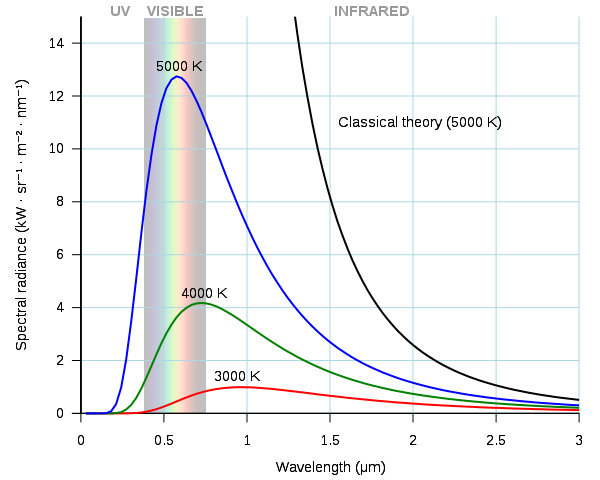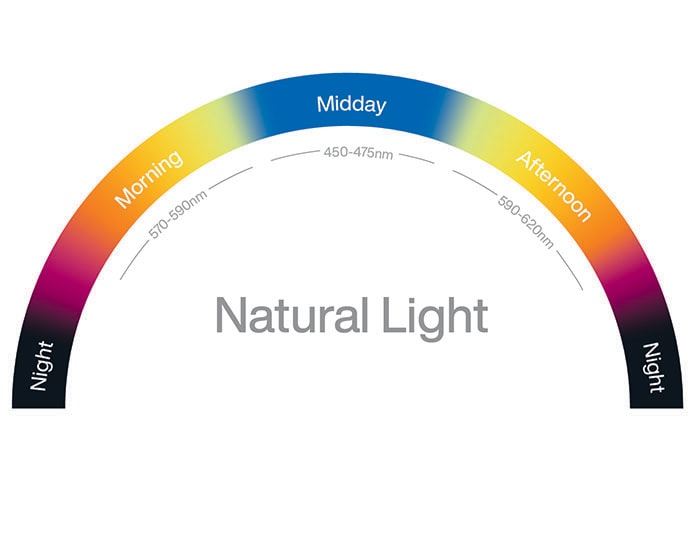Circadian Lighting Enhances Human Response

Image Source: kanyanat wongsa/shutterstock.com
By Adam Kimmel for Mouser Electronics
Edited July 16, 2020 (Published April 21, 2020)
Introduction
The “Circadian” cycle, termed for the Latin circa dies (about day), references the human body’s natural tendency toward alertness and drowsiness patterns that repeat about the same times each day. The cycle is influenced by the regularity of sleep, consistency of activities/behaviors, and light and dark conditions. Interruptions to the pattern of sleep disrupt the body’s circadian rhythm, leading to increased weariness throughout the day. Although humans can not practically sync each day to their natural rhythm, using circadian lighting helps reset a disrupted cycle to the natural frequency.
Circadian lighting dynamically adapts the intensity and color of light throughout the day to adapt to the human circadian rhythm. This flexibility reduces the interference induced by other harmful factors. These benefits are primary motivations behind the medical industry adopting circadian lighting to improve the patient experience for newborns, long-term care patients, and patients with lengthy surgical recoveries.
Several mechanisms control the various settings of circadian lighting. LED component suppliers have leveraged these levers and improved the control and reliability of lighting sources. Spectral engineers introduced innovative features that create the phases of the circadian cycle within a single component. These phases simulate the condition of the sun throughout the day and its brightness during periods of high and low alertness. Here, we’ll review the control mechanisms used to produce circadian lighting, and a study of how LED spectral engineering enables the entire cycle within an individual component.
Control Mechanisms
Color temperature, tuning, and rendering
The relationship between temperature and wavelength dictates the pattern of circadian light. Incandescent light bulbs with a standard tungsten filament provide the basis for the light-color chart, which defines the range of colors for circadian light.
Light color ranges from warm to cool, though “cool” colors (blues) correlate to higher temperatures, 6000K-7000K. Warm colors (oranges and yellows) correspond to lower temperature values, around 3000K-4000K. The reason for this is the inverse relationship between the wavelength at which a black body emits the most light and its temperature (Figure 1). The higher temperatures of the blue daylight colors carry the shortest visible wavelengths; oranges and yellows have the longest ones.

Figure 1: Spectral intensity of Planck’s black-body radiation vs. wavelength at various temperatures. (Source: Darth Kule)
With those relationships in mind, circadian light uses filament temperature to calibrate the color and intensity to the desired time of day, depending on the geographic region. Generally, the color temperature increases toward the middle of the daylight hours, peaks at noon, and decreases throughout the remainder of the day. Color rendering, a process that tunes the test article to a black body source (under 5000K), checks that the filament temperature matches the desired color of the corresponding time of day.
Contrast ratio and daylight tuning
A comparison of the highest color to the lowest for a given source, the contrast ratio defines the starting and ending points of the circadian lighting scale. Lighting the light sequence to match the environmental conditions and adapt for the time of year and daylight savings time while correlating with the typical human response throughout the day. This process is the method for how circadian lighting syncs the person with a 24-hour cycle.
Intensity tuning, brightness/dimming, and stimulus tuning
Intensity tuning is a more straightforward approach to color or daylight tuning. Here, the color of the filament remains constant, and the intensity of the light is increased and decreased through prescribed dimming steps. Just as the temperature increases as the time moved closer to noon with color tuning, the dimming decreases closer to midday, emitting a higher amount of light. Combining intensity and color tuning creates a custom natural light pattern that engineers optimize for the circadian cycle.
LEDs and spectral power density (SPD)
LEDs are much easier to control than incandescent bulbs, and they enable spectral engineering to incorporate the behavior of a circadian lighting system within a single component. Up to 80 percent more energy-efficient than incandescent bulbs, the peak radiation temperature for a given color is slightly lower in LEDs because of a higher percentage of input being converted to light. Figure 2 correlates the color temperature of an LED to that of a traditional incandescent bulb:

Figure 2: The image shows the scale for LED and traditional bulb colors. (Source: Milagli/Shutterstock.com)
Engineers use the Spectral Power Density (SPD) to control the intensity of light at given wavelengths along the circadian cycle. Figure 3 below correlates the wavelength to various times of the day.

Figure 3: The image shows wavelength as a function of time of day. (Source: Mouser Electronics)
From the wavelength image in Figure 3, the idea circadian lighting system would have the highest intensities at the shortest wavelengths (450nm-475nm) around midday when the user needs to be alert. The system would have the highest intensity at the longest wavelengths (600+nm) as the user sleeps.
Engineers can tune LEDs to a specific color temperature much more accurately than they can with traditional lighting solutions. This feature unlocks the opportunity for a single smart device that lighting designers can program to the desired times of the day. A sensor can capture the outdoor lighting state and transmit that information to the controller, which then adjusts the LED to the given temperature. Various bulbs that operate during the different parts of the day could be turned on or off after receiving the signal from the sensor. The controllability of the LED ensures that it delivers the color temperature it was programmed to achieve accurately.
Conclusion
Environmental conditions affect the human response. The body emits cortisol when awake and melatonin when asleep. These chemicals are the body’s way of regulating how to spend its energy. People’s daily lives, schedules, and social habits sometimes disrupt the body’s natural desire to follow the circadian cycle, however.
Circadian lighting is gaining popularity in medical applications such as hospital in-patient, newborn, and long-term care as a way to counteract that negative societal trend. Programming indoor lighting patterns re-aligns the human cycle to the natural daily cycle set by the sun. This step allows the user to rebalance the chemical release in the body and improves the enjoyment he feels at each phase by helping the body feel how its best throughout the day.
Using LEDs and spectral engineering to tailor the circadian lighting cycle to the natural solar pattern significantly improves the human response. With the addition of sensors, the device contains more of the functionality of the system, reducing the number of components, size, and can be hidden better from the user. Incorporating smart technology into the device would allow the circadian lighting solution to learn the user’s pattern and individualize the experience even more with less manual operation. Ultimately, the improved, improved control, smart technology, color options, and sensor inclusion will aid spectral engineers in innovating a new platform of circadian lights.